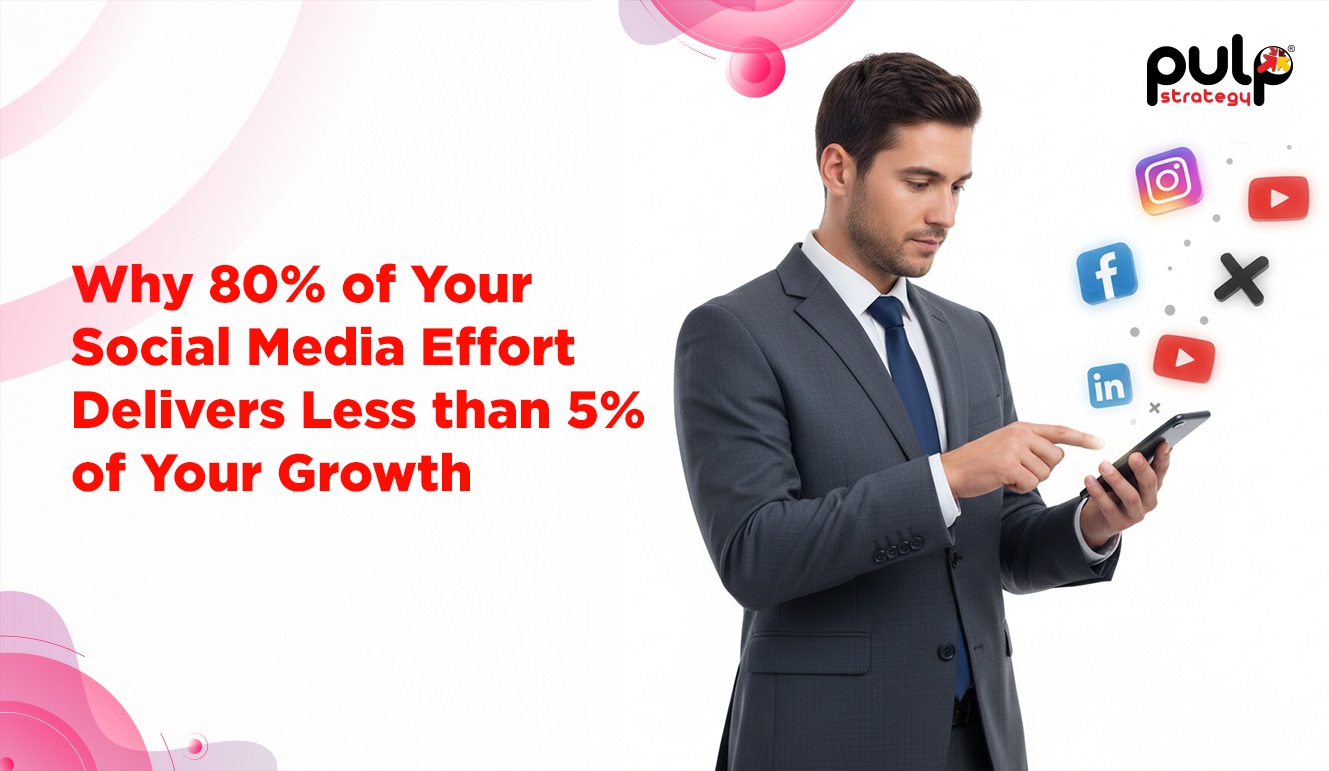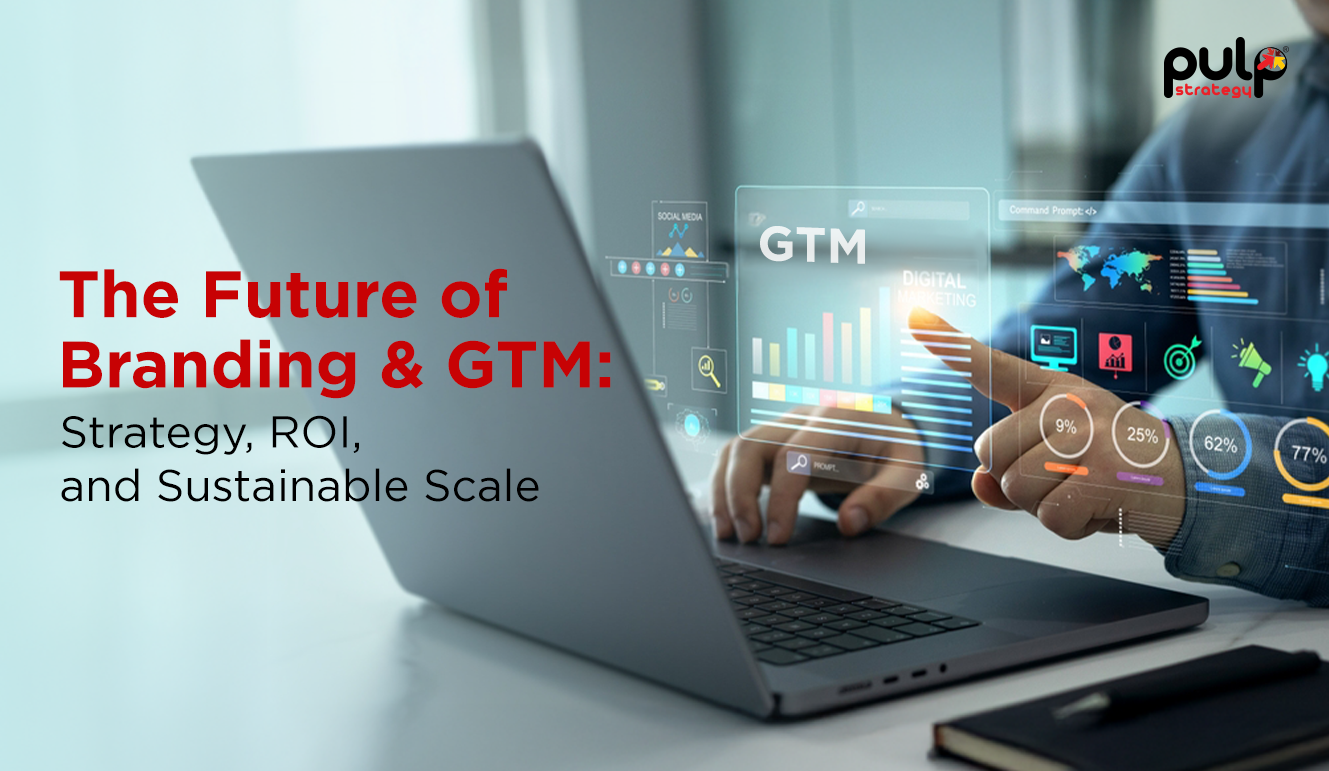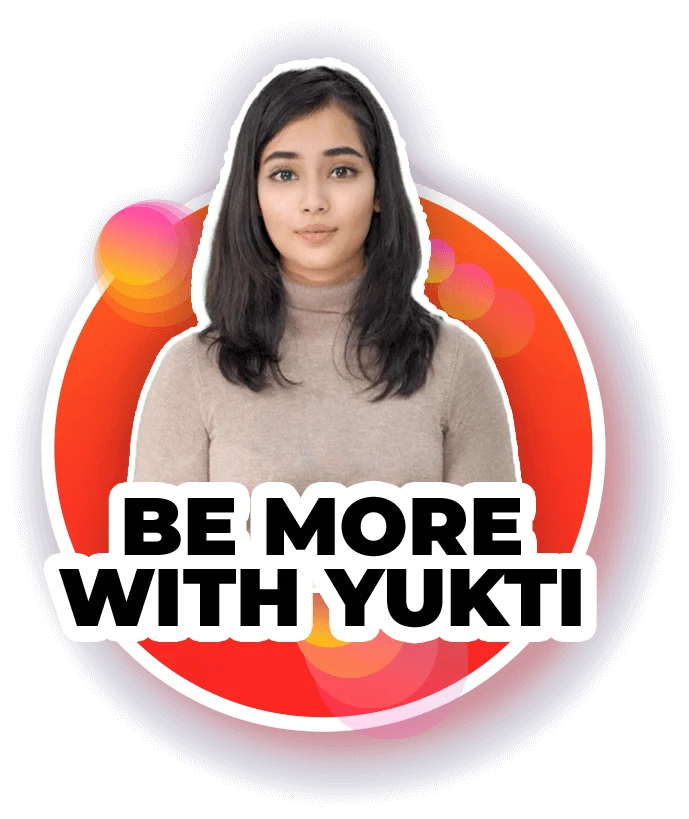In 2025, channel marketing isn’t just about kits, discounts, and one-size-fits-all co-branding. It’s about building strategic ecosystems where partner success equals business growth. Yet, most channel programs still look like they were built for 2010. If your partner marketing strategy involves PDFs, passive emails, and post-event reports, it’s time to evolve.
The truth is, channel partners are changing. They’re digital-first business owners. They expect velocity, personalization, enablement, and tools that deliver pipeline, not just leads. At Pulp Strategy, we’ve spent years engineering award-winning programs like Cloud Champions 11 and Cloud Speed Circuit that redefined partner marketing strategy across India and APAC.
This article outlines a blueprint to reimagine your channel marketing strategy. We cover what modern partners expect, where most programs fail, and how to win by combining partner enablement with demand generation at scale.
The Shift: From Broadcast to Engagement
In traditional models, partner marketing meant pushing out content and hoping resellers would activate it. Today, it's about co-creating demand and arming partners with tools to close more, faster. The shift? From passive distribution to performance-led engagement.
Take Cloud Champions 11 , our flagship Microsoft partner engagement program. We flipped the model: instead of pushing content, we built a gamified enablement engine. Partners accessed customized training, participated in solution-selling simulations, and earned real-world recognition. The result? Over 3,000+ active partner participants and measurable acceleration in Microsoft cloud services revenue.
CMO Takeaway :
Treat partners like customers. Create content that sells, not just informs. Reward outcomes, not attendance.
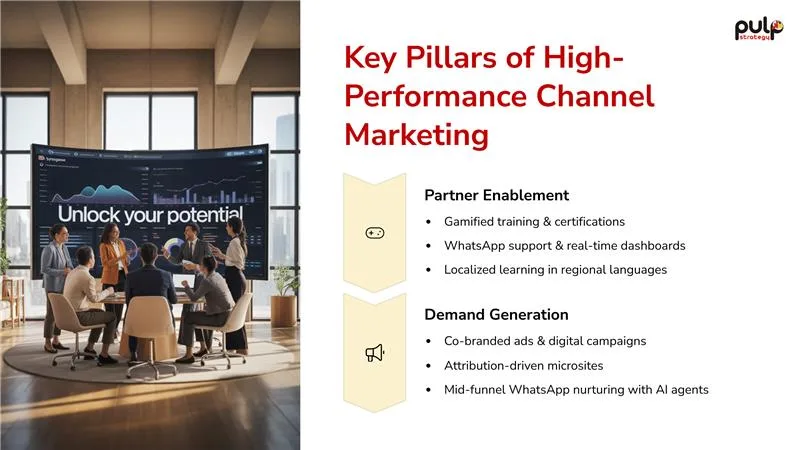
Building Enablement Ecosystems, Not Just Toolkits
Enablement is more than a portal. It's the infrastructure that empowers partners to succeed across the lifecycle-onboarding, skilling, campaign execution, and sales closure.
In Cloud Speed Circuit, we built a multi-touch partner journey, featuring:
- Digital learning modules in local languages
- Real-time dashboards to track deal progress
- WhatsApp support bots for campaign management
- Integrated customer demand campaigns with attribution tagging
Partners weren’t just trained. They were equipped, supported, and celebrated.
CMO Takeaway :
Don’t just dump assets in a portal. Build experiences that onboard, educate, and convert with agility.
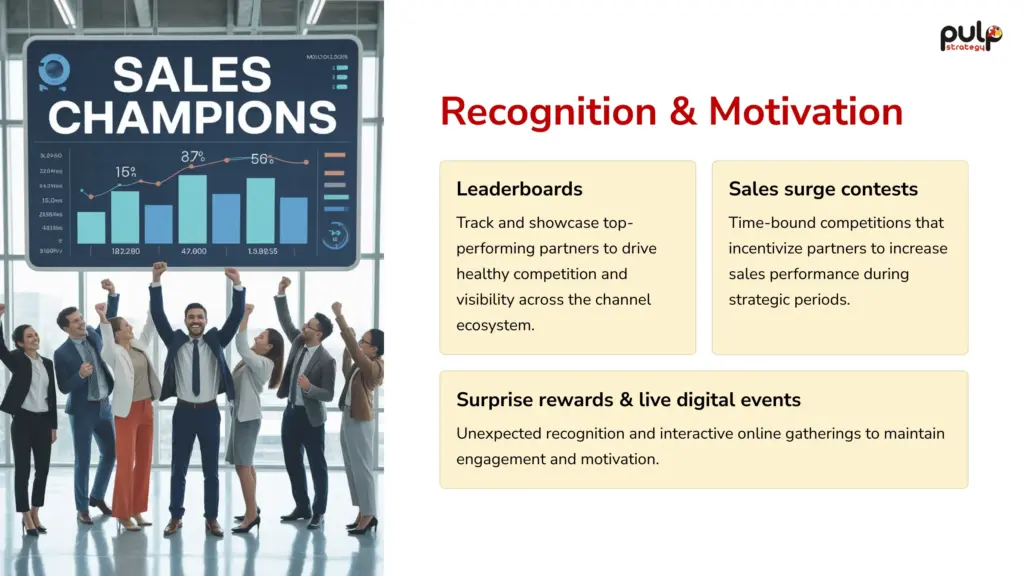
Aligning Demand Gen with Partner Momentum
Most partner marketing campaigns fall apart at execution. Why? Because they treat enablement and demand gen as two separate tracks. The reality: customers buy when partners sell. And partners sell when they're confident.
That’s why our channel marketing campaigns are synchronized. In Cloud Champions 11, we launched co-branded customer ads across digital channels alongside training cohorts. Partners saw the messaging, absorbed the pitch, and then activated outbound with pre-built assets. This alignment cut friction and boosted speed to market.
CMO Takeaway :
Combine partner education with real-time demand activation. Show partners how marketing becomes revenue.
Channel Isn’t a Cost Center, It’s a Pipeline Accelerator
Let’s talk numbers. One of the biggest gaps in channel strategy is failing to treat partners as a high-performing distribution engine.
- A 5% increase in partner-led activation can lead to 22% lift in mid-funnel velocity.
- In Cloud Champions 11, partners who completed 3 enablement tracks drove 3.2x more qualified opportunities than passive participants.
CMO Takeaway :
Frame channel marketing as performance marketing. If you can prove pipeline, you can own budget.
Mistakes Most CMOs Make in Channel Strategy
Let’s call them out:
- Generic assets: Templates don’t move product.
- One-size metrics: Not all partners are equal. Measure outcomes by maturity.
- Poor visibility: No attribution = no optimisation.
- Lack of regional nuance: APAC isn’t a monolith. Partner needs vary by country, language, and GTM.
CMO Takeaway :
Audit your channel marketing campaigns for realism. Would you use these assets to sell your own product?
What We've Learned: Tough Truths from the Field
- Most channel marketing fails because the incentives are misaligned.
- If partners can’t see their pipeline, they won’t sell your product.
- Events are good—but without follow-through journeys, they’re expensive coffee breaks.
CMO Takeaway :
Would your best sales rep win with these tools? If not, your partners won’t either.
What's Next: Personalization, Performance, AI
The future of partner marketing strategy is agile, AI-powered, and personalized at scale. At Pulp Strategy, we’re building:
- Smart partner segmentation for tailored campaign journeys
- AI-powered chat agents for enablement (think: GPT meets channel sales coaching)
- Real-time sales nudges and insights for partners on mobile
- Predictive partner scoring to allocate MDF intelligently
Because partner loyalty isn't built on PDFs. It's built on profitability and experience.
CMO Takeaway :
Invest in partner experiences that learn and adapt. The new battleground is ease of doing business.
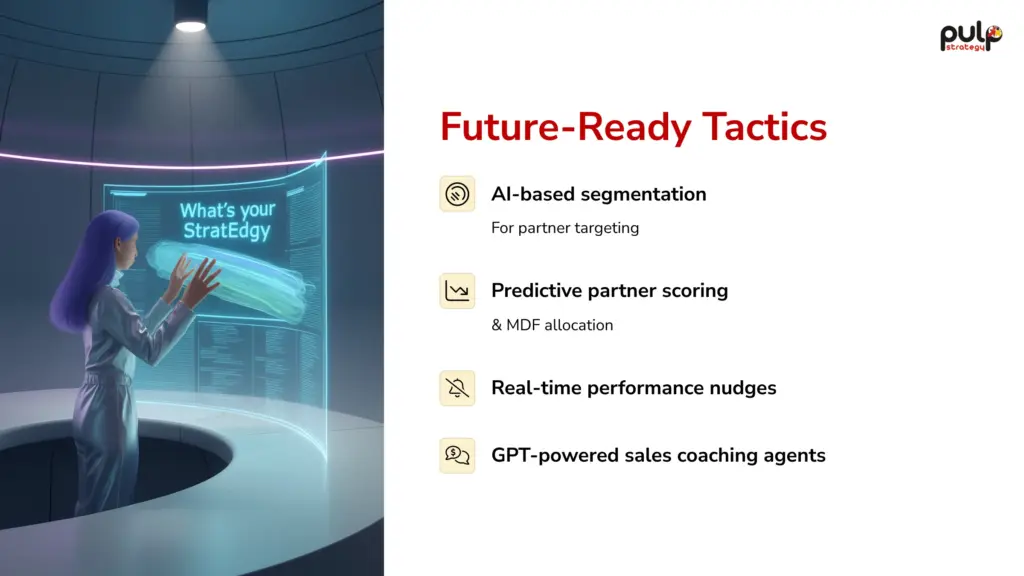
Final Thoughts: Partner-Led Growth Isn’t Optional
Channel marketing is no longer a support function. It’s a frontline strategy. When done right, it builds pipeline, expands territory, and delivers high-trust revenue at scale.
But it requires commitment: not just to creative, but to systems, training, and data-backed planning. If your channel marketing feels slow, disconnected, or underwhelming, you’re not alone.
The good news? You don’t need to start from scratch.
The blueprint is proven. The technology is ready. The partners are waiting.
It’s time to reimagine your partner marketing strategy, from enablement to execution to revenue impact.
And if you're serious about building programs that partners don’t just participate in, but fight to be a part of, you're in the right place.



